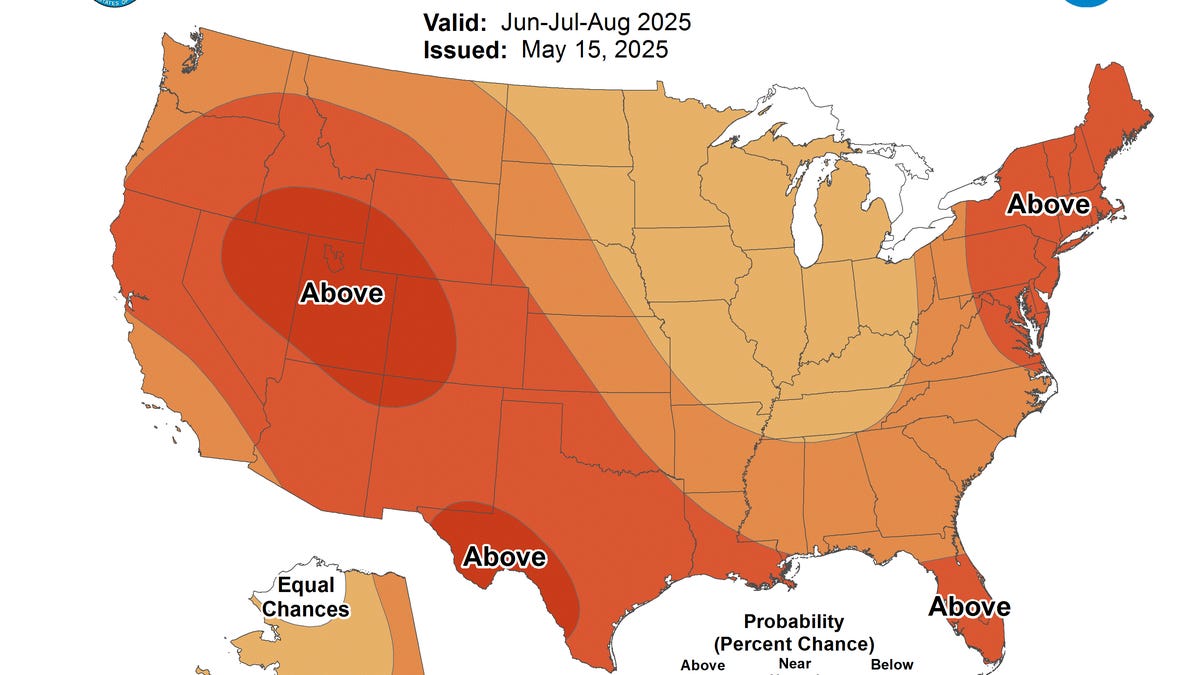Tips on surviving extreme heat
With record-breaking heat waves impacting millions, learn the essential tips on how to stay safe amidst extreme temperatures.
Summer 2025 has arrived. It’s starting off hot, and the forecast says get used to it.
A hot summer isn’t just uncomfortable − it’s dangerous. Heat killed more people in the United States in 2024 than floods, tornadoes, wind or hurricanes, according to a report on weather-related fatalities published by the National Weather Service. The 30-year average tells the same story.
Heat danger comes in many forms:
All of that can all quickly cascade into a life-threatening or deadly illness, even in otherwise healthy people.
Some heat safety tips are obvious, but some are surprising. (Do you know how much water to drink while in the heat? It’s probably more than you think.)
Here’s what to know:
Heat safety basics
- Use sunblock or sunscreen: And reapply it regularly (every two hours is a good baseline.)
- Dress for the heat: Pick loose-fitting, light-colored and lightweight clothes, the National Weather Service recommends.
- Don’t leave kids or pets in the car: The temperature quickly becomes deadly − even if it’s not that hot out.
- Check the weather: Your favorite weather app should have a wealth of information about UV index (for sunblock purposes), heat warnings and the feels-like temperature (more on why that’s important below.) Heat.gov has additional information about the forecast and heat risk.
- Bring water: You’ll need multiple bottles of water per person if you’re spending extended time in the sun. (How many bottles? Read more here.)
- Seek shade and air conditioning: Minimize your risk by staying cool and avoiding direct sun when you can.
- Know your risks: Heat is dangerous for everyone, but some people are more vulnerable than others. Being a child, over 65 or pregnant puts you at greater risk, the Centers for Disease Control and Prevention says.
Stories about our planet: Sign up for USA TODAY’s Climate Point newsletter.
Humidity isn’t just uncomfortable. What’s the heat index?
When the humidity is high, sweating isn’t as effective at cooling the body. That makes it feel hotter than it is − and increases the danger.
The heat index is a measure of how hot it really feels when relative humidity is factored in with the actual air temperature.
When the heat index reaches 105 degrees or higher, conditions can quickly become dangerous for people and pets.
A lot.
In Arizona, officials recommend drinking about 65 ounces of water a day, even if you’re mostly indoors.
It’s even more urgent for people working outdoors in extreme heat. The Occupational Safety and Health Administration says outdoor workers should drink at least 8 ounces of water every 20 minutes, even if they’re not thirsty.
If you’re drinking 16-ounce bottles of water, that would be three bottles every two hours.
Just drink water? There’s more to know.
Your body may need to replenish electrolytes, but be careful about sugary or caffeinated drinks if you’re trying to stay hydrated.
Kelly Olino, assistant professor of surgical oncology at the Yale School of Medicine, told USA TODAY that people can dilute a bottle of Gatorade with water to replenish the body and replace salt losses from extended sweating. “In the extreme heat, with sweating, we’re losing pure water, but we’re also losing salt,” she said.
From hot to heatstroke: Know how to spot the symptoms of a life-threatening condition
Excessive heat and humidity make it difficult for your body to regulate its temperature. Here are some of the signs and symptoms of heat illness, according to the CDC.
The National Athletic Trainers’ Association says heatstroke can quickly turn deadly. The association says people should watch for:
- Altered consciousness (“seizures, confusion, emotional instability, irrational behavior or decreased mental acuity”)
- Nausea, vomiting and diarrhea
- Headache, dizziness and weakness
- Increased heart rate
- Decreased blood pressure and fast breathing
- Dehydration
- Combativeness
A person with a temperature around 104 degrees is in a life-threatening situation: They need immediate medical treatment. One incredibly effective treatment: an ice-filled tub.
Contributing: Cybele Mayes-Osterman, USA TODAY; Raphael Romero Ruiz, Arizona Republic; Cheryl McCloud, Pensacola News Journal
